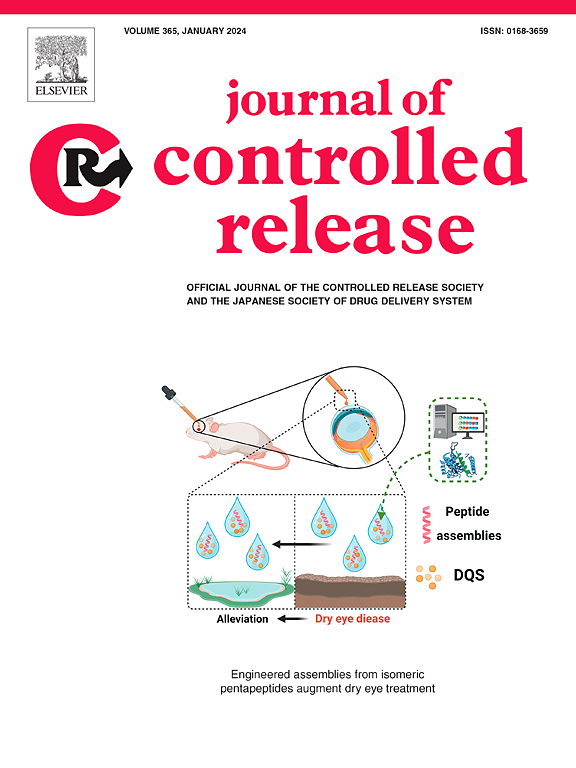Formulation-optimized oncolytic viruses: Advancing systemic delivery and immune amplification
IF 10.5
1区 医学
Q1 CHEMISTRY, MULTIDISCIPLINARY
引用次数: 0
Abstract
Cancer is a major global public health challenge. Traditional treatments such as surgery, radiotherapy, and chemotherapy often show limited efficacy, minimal improvements in survival rates, and high recurrence risks. With limited therapeutic options for solid tumors, tumor immunotherapy, which harness the body's immune system, has gained significant attention. Oncolytic viruses (OVs) selectively infect and destroy tumor cells, induce immunogenic cell death (ICD) and stimulate antitumor immune responses. However, current OVs therapies, which are predominantly administered via intratumoral injection, have numerous limitations, including the need for guidance, suboptimal viral spread, extracellular matrix barriers, and immune clearance. These challenges hinder repeated dosing effectiveness and restrict its clinical applicability. Although genetic engineering has improved the tumor selectivity and immune activation of OVs, significant delivery challenges remain. Recently, optimizing pharmaceutical formulations to enhance tumor targeting and viral accumulation has emerged as a key approach to improving OV therapy and expanding clinical applicability. This review highlights the critical role of pharmaceutical formulations in biologics and outlines recent advances in OVs formulations. Specifically, we discuss strategies aimed at enhancing tumor targeting, reducing adverse effects, and promoting antitumor immunity. These strategies significantly enhance OV therapeutic potential and inform novel delivery systems for clinical translation.


配方优化溶瘤病毒:推进全身递送和免疫扩增
癌症是一项重大的全球公共卫生挑战。传统的治疗方法,如手术、放疗和化疗通常疗效有限,生存率的改善很小,而且复发风险高。由于实体瘤的治疗选择有限,利用人体免疫系统的肿瘤免疫疗法获得了极大的关注。溶瘤病毒(OVs)选择性感染和破坏肿瘤细胞,诱导免疫原性细胞死亡(ICD)并刺激抗肿瘤免疫应答。然而,目前主要通过肿瘤内注射给药的OVs疗法有许多局限性,包括需要指导、次优病毒传播、细胞外基质屏障和免疫清除。这些挑战阻碍了重复给药的有效性并限制了其临床适用性。尽管基因工程已经改善了OVs的肿瘤选择性和免疫激活,但仍然存在重大的递送挑战。近年来,优化药物配方以增强肿瘤靶向性和病毒蓄积已成为改善OV治疗和扩大临床适用性的关键途径。这篇综述强调了药物制剂在生物制剂中的关键作用,并概述了OVs制剂的最新进展。具体来说,我们讨论了旨在增强肿瘤靶向性、减少不良反应和促进抗肿瘤免疫的策略。这些策略显著提高了OV的治疗潜力,并为临床翻译提供了新的传递系统。
本文章由计算机程序翻译,如有差异,请以英文原文为准。
求助全文
约1分钟内获得全文
求助全文
来源期刊

Journal of Controlled Release
医学-化学综合
CiteScore
18.50
自引率
5.60%
发文量
700
审稿时长
39 days
期刊介绍:
The Journal of Controlled Release (JCR) proudly serves as the Official Journal of the Controlled Release Society and the Japan Society of Drug Delivery System.
Dedicated to the broad field of delivery science and technology, JCR publishes high-quality research articles covering drug delivery systems and all facets of formulations. This includes the physicochemical and biological properties of drugs, design and characterization of dosage forms, release mechanisms, in vivo testing, and formulation research and development across pharmaceutical, diagnostic, agricultural, environmental, cosmetic, and food industries.
Priority is given to manuscripts that contribute to the fundamental understanding of principles or demonstrate the advantages of novel technologies in terms of safety and efficacy over current clinical standards. JCR strives to be a leading platform for advancements in delivery science and technology.
 求助内容:
求助内容: 应助结果提醒方式:
应助结果提醒方式:


